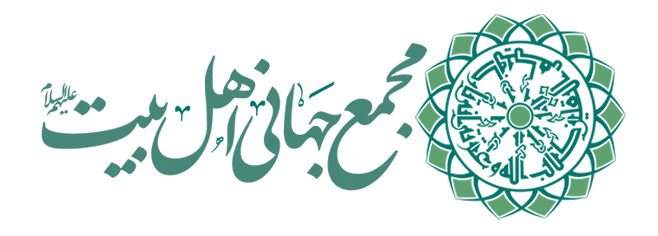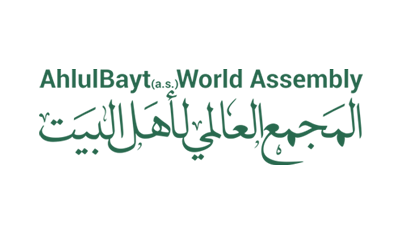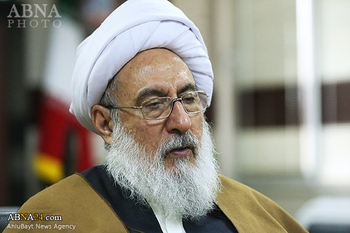Late Mojtahed Shabestari, Mujahid, insightful cleric
In an interview with Hojat al-Islam Javad Mojtahed Shabestari, son of the late Hojat al-Islam Mohsen Mojtahed Shabestari, the KHAMENEI.IR website examined the scientific and revolutionary background of the deceased.
Hojat al-Islam Haj Sheikh Mohsen Mojtahed Shabestari passed away on November 18, 2021.
In a part of the message of condolence on the occasion of the demise of that “Mujahid scholar”, Ayatollah Khamenei said, “That noble scholar was one of the most successful clerics active in social services and public guidance and administration of seminaries in Tehran and Tabriz. His efforts and struggles during the long period of Friday prayers Imamate in Tabriz are unforgettable. The lasting works of the deceased in the seminary of Tehran, etc. will Insha’Allah attract divine mercy to him. 2021/11/18”
In an interview with Hojat al-Islam Javad Mojtahed Shabestari, son of the late Hojat al-Islam Mohsen Mojtahed Shabestari, the KHAMENEI.IR website examined the scientific and revolutionary background of the deceased.
The scientific and seminary background of the late Mojtahed Shabestari is one of the highlights of his life. At the beginning of the interview, please briefly describe the steps he took in the course of his academic and scientific development in the seminaries, and then reached the stage of professor, seminary administration and student training.
My late father, Haj Sheikh Mohsen Mojtahed Shabestari, was born in 1937 in Shabestar. My grandfather, the late Grand Ayatollah Haj Mirza Kazem Mojtahed Shabestari, one of the first-rate scholars of Tabriz, left Shabestar for Tabriz due to some issues. My father also went to Tabriz with his father and learned some of the basics of religious sciences there and then emigrated to Qom. He entered the seminary of Qom in 1953 and studied in the presence of the professors of the time. He used the lectures of great figures such as the late Grand Ayatollah Borujerdi, Imam Khomeini, the late Ayatollah Mohaghegh Damad, the late Allameh Tabatabai, and other dignitaries, authorities, and eminent professors. In addition to his education, he also taught various levels in the seminary of Qom. I remember him saying, “I taught Rasael and Makaseb in Qom”. Then, at the request of some believers in Tehran, he moved to the city to be an Imam for a mosque.
I think it was around 1974 that he went to Tehran and, in addition to being the imam of the mosque, taught in one of the seminaries in Tehran called the Sheikh Abdul Hussein School in the bazaar, where he taught high levels of seminary teachings such as Rasael and Makaseb, and Kefayeh. After the victory of the Islamic Revolution, he was appointed to some positions for a while, including, he became a member of the Assembly of Experts and the Islamic Consultative Assembly. After these positions, he again continued teaching in the seminary of the late Ayatollah Iravani, he took charge of the students and taught various jurisprudential books for several years. His jurisprudence course was welcomed by the students and scholars of Tehran.
His entry into the high levels of teaching in the seminary of Tehran coincided with the culmination of the revolutionary struggle against the Shah’s regime. With the victory of the Islamic Revolution, this political activity was more seriously accompanied by his membership in the main institutions of the Islamic system.
Yes. Before the victory of the Islamic Revolution, he was one of the founders of the Combatant Clergy Association of Tehran. I remember he mostly stays at relatives’ houses at night. Because he was frequently persecuted by SAVAK, and he was eventually arrested and imprisoned. He was involved in distributing Imam Khomeini’s declarations and inviting revolutionary speakers and leading the people’s struggles in the Abbasabad area, north of Tehran, and his mosque was the center of the struggles. He participated in the drafting of the Combatant Clergy Association declarations and collaborated with the late Ayatollah Mofteh and Ayatollah Emami Kashani.
After the victory of the Islamic Revolution, he became a member of the Islamic Consultative Assembly and a member of the Assembly of Experts for several terms. He often gave speeches to enlighten and guide the people, in various centers and on the battlefields of the right against the wrong (during 8-year Iraq’s imposed war against Iran). Sometimes I was in his service, and I saw him meeting and talking with the warriors. He was even on the front lines to accompany the warriors. He played a prominent role in the Assembly of Experts, explaining Ayatollah Khamenei’s characteristics for a sensitive leadership position, and defending the Velayat. His guiding role in different periods and critical points in the history of the Islamic Revolution of Iran is undeniable.
In addition to the personal acquaintance of the late Mr. Mojtahed Shabestari with Ayatollah Khamenei, he had frequent meetings with the Supreme Leader due to various responsibilities in the post-revolutionary years, and you, as the son of the deceased, were aware of it. The late Mojtahed also had a book about Velayat-e-Faqih.
Yes. He had a deep belief in Velayat-e-Faqih. He also had a published book about Velayat-e-Faqih. He really considered obedience to Velayat-e-Faqih as a duty, and said, “If the Supreme Leader of the Revolution orders me to go somewhere and arrange the shoes of the people, I will obey”. Of course, accepting the responsibility of Tabriz was based on this issue. Late Shabestari was a member of the Islamic Consultative Assembly when the Supreme Leader of the Revolution said, “You must go to Tabriz”. He first did not accept the responsibility of being the Friday Prayer Leader of Tabriz, but when the Supreme Leader ordered, he temporarily accepted. Even in his letter of appointment, the word “temporary” is mentioned. When he met with the Supreme Leader of the Revolution, he told him to dismiss him from Tabriz, but the Supreme Leader did not accept. I even remember him once said to me, “When I asked the Supreme Leader to allow me to return from Tabriz, the Supreme Leader said that with me, he is comfortable with Azerbaijan”. Thank God, now Mr. Ale - Hashem is working in this position with ability and efficiency.
He considered the Islamic Revolution to be a phenomenon arising from Islamic precepts and rooted in religious beliefs. In his view, the movement of the Islamic Revolution was inspired by religious precepts. He believed in Velayat-e-Faqih with all his being, and as I said, he also wrote a book in this regard.
A few years ago, in a meeting with the people of Azarbaijan, the Supreme Leader of the Revolution called the late Shabestari an “insightful scholar”, and he was indeed a man of discernment and courage. He was not afraid of anyone in expressing his views.
In the message of condolence of the Supreme Leader of the Revolution, the social services of the late Shabestari are also mentioned. How was his relationship with the people and what were his social services like?
The messages and orders of the Leader of the Revolution are always accurate. Yes, the late Shabestari served the people very well. When he came to Tehran from Qom, in addition to be Imam of a mosque, he held classes for university students. May God have mercy on Hojat al-Islam Rastgoo. Late Shabestari invited Hojat al-Islam Rastgoo to hold classes for the children. Later, in the same mosque, he built the Qarz al-Hasna fund and the library. One of his lasting works is the establishment of the Noor Islamic Complex in Tehran. The complex has a mosque, a meeting hall, a library, a reception hall, and a clinic. He also established a hospital in the south of Tehran, the operation of which is nearing completion. This hospital is located near Islamshahr and in deprived areas. These actions are part of his remnants of righteousness.
He also founded the Al-Mahdi Mosque near Azadi Square in Tehran, which is used by locals today. In Tabriz, he also established the glorious Musalla of Imam Khomeini (r.a.), the construction of which faced many difficulties and many problems, and a book can be written describing these difficulties and his perseverance in building the mosque. In addition to the establishment of the mosque, he built the seminary of Hazrat Samen al-Hojaj, which we hope will be completed and put into operation soon. He also had other services in Tabriz that I do not remember now.
He usually followed the problems of the people, especially social problems, and took care of them. I witnessed that when a city was in trouble, he would call and follow up. In the case of social services, he was a servicing scholar. In my opinion, what is left of him today is the seminary of Ayatollah Iravani. When the late Ayatollah Irvani passed away, this seminary was not completed yet, but it was completed and inaugurated with the follow-up and attention of the late Shabestari.
In an interview with Hojat al-Islam Javad Mojtahed Shabestari, son of the late Hojat al-Islam Mohsen Mojtahed Shabestari, the KHAMENEI.IR website examined the scientific and revolutionary background of the deceased.
Hojat al-Islam Haj Sheikh Mohsen Mojtahed Shabestari passed away on November 18, 2021.
In a part of the message of condolence on the occasion of the demise of that “Mujahid scholar”, Ayatollah Khamenei said, “That noble scholar was one of the most successful clerics active in social services and public guidance and administration of seminaries in Tehran and Tabriz. His efforts and struggles during the long period of Friday prayers Imamate in Tabriz are unforgettable. The lasting works of the deceased in the seminary of Tehran, etc. will Insha’Allah attract divine mercy to him. 2021/11/18”
In an interview with Hojat al-Islam Javad Mojtahed Shabestari, son of the late Hojat al-Islam Mohsen Mojtahed Shabestari, the KHAMENEI.IR website examined the scientific and revolutionary background of the deceased.
The scientific and seminary background of the late Mojtahed Shabestari is one of the highlights of his life. At the beginning of the interview, please briefly describe the steps he took in the course of his academic and scientific development in the seminaries, and then reached the stage of professor, seminary administration and student training.
My late father, Haj Sheikh Mohsen Mojtahed Shabestari, was born in 1937 in Shabestar. My grandfather, the late Grand Ayatollah Haj Mirza Kazem Mojtahed Shabestari, one of the first-rate scholars of Tabriz, left Shabestar for Tabriz due to some issues. My father also went to Tabriz with his father and learned some of the basics of religious sciences there and then emigrated to Qom. He entered the seminary of Qom in 1953 and studied in the presence of the professors of the time. He used the lectures of great figures such as the late Grand Ayatollah Borujerdi, Imam Khomeini, the late Ayatollah Mohaghegh Damad, the late Allameh Tabatabai, and other dignitaries, authorities, and eminent professors. In addition to his education, he also taught various levels in the seminary of Qom. I remember him saying, “I taught Rasael and Makaseb in Qom”. Then, at the request of some believers in Tehran, he moved to the city to be an Imam for a mosque.
I think it was around 1974 that he went to Tehran and, in addition to being the imam of the mosque, taught in one of the seminaries in Tehran called the Sheikh Abdul Hussein School in the bazaar, where he taught high levels of seminary teachings such as Rasael and Makaseb, and Kefayeh. After the victory of the Islamic Revolution, he was appointed to some positions for a while, including, he became a member of the Assembly of Experts and the Islamic Consultative Assembly. After these positions, he again continued teaching in the seminary of the late Ayatollah Iravani, he took charge of the students and taught various jurisprudential books for several years. His jurisprudence course was welcomed by the students and scholars of Tehran.
His entry into the high levels of teaching in the seminary of Tehran coincided with the culmination of the revolutionary struggle against the Shah’s regime. With the victory of the Islamic Revolution, this political activity was more seriously accompanied by his membership in the main institutions of the Islamic system.
Yes. Before the victory of the Islamic Revolution, he was one of the founders of the Combatant Clergy Association of Tehran. I remember he mostly stays at relatives’ houses at night. Because he was frequently persecuted by SAVAK, and he was eventually arrested and imprisoned. He was involved in distributing Imam Khomeini’s declarations and inviting revolutionary speakers and leading the people’s struggles in the Abbasabad area, north of Tehran, and his mosque was the center of the struggles. He participated in the drafting of the Combatant Clergy Association declarations and collaborated with the late Ayatollah Mofteh and Ayatollah Emami Kashani.
After the victory of the Islamic Revolution, he became a member of the Islamic Consultative Assembly and a member of the Assembly of Experts for several terms. He often gave speeches to enlighten and guide the people, in various centers and on the battlefields of the right against the wrong (during 8-year Iraq’s imposed war against Iran). Sometimes I was in his service, and I saw him meeting and talking with the warriors. He was even on the front lines to accompany the warriors. He played a prominent role in the Assembly of Experts, explaining Ayatollah Khamenei’s characteristics for a sensitive leadership position, and defending the Velayat. His guiding role in different periods and critical points in the history of the Islamic Revolution of Iran is undeniable.
In addition to the personal acquaintance of the late Mr. Mojtahed Shabestari with Ayatollah Khamenei, he had frequent meetings with the Supreme Leader due to various responsibilities in the post-revolutionary years, and you, as the son of the deceased, were aware of it. The late Mojtahed also had a book about Velayat-e-Faqih.
Yes. He had a deep belief in Velayat-e-Faqih. He also had a published book about Velayat-e-Faqih. He really considered obedience to Velayat-e-Faqih as a duty, and said, “If the Supreme Leader of the Revolution orders me to go somewhere and arrange the shoes of the people, I will obey”. Of course, accepting the responsibility of Tabriz was based on this issue. Late Shabestari was a member of the Islamic Consultative Assembly when the Supreme Leader of the Revolution said, “You must go to Tabriz”. He first did not accept the responsibility of being the Friday Prayer Leader of Tabriz, but when the Supreme Leader ordered, he temporarily accepted. Even in his letter of appointment, the word “temporary” is mentioned. When he met with the Supreme Leader of the Revolution, he told him to dismiss him from Tabriz, but the Supreme Leader did not accept. I even remember him once said to me, “When I asked the Supreme Leader to allow me to return from Tabriz, the Supreme Leader said that with me, he is comfortable with Azerbaijan”. Thank God, now Mr. Ale - Hashem is working in this position with ability and efficiency.
He considered the Islamic Revolution to be a phenomenon arising from Islamic precepts and rooted in religious beliefs. In his view, the movement of the Islamic Revolution was inspired by religious precepts. He believed in Velayat-e-Faqih with all his being, and as I said, he also wrote a book in this regard.
A few years ago, in a meeting with the people of Azarbaijan, the Supreme Leader of the Revolution called the late Shabestari an “insightful scholar”, and he was indeed a man of discernment and courage. He was not afraid of anyone in expressing his views.
In the message of condolence of the Supreme Leader of the Revolution, the social services of the late Shabestari are also mentioned. How was his relationship with the people and what were his social services like?
The messages and orders of the Leader of the Revolution are always accurate. Yes, the late Shabestari served the people very well. When he came to Tehran from Qom, in addition to be Imam of a mosque, he held classes for university students. May God have mercy on Hojat al-Islam Rastgoo. Late Shabestari invited Hojat al-Islam Rastgoo to hold classes for the children. Later, in the same mosque, he built the Qarz al-Hasna fund and the library. One of his lasting works is the establishment of the Noor Islamic Complex in Tehran. The complex has a mosque, a meeting hall, a library, a reception hall, and a clinic. He also established a hospital in the south of Tehran, the operation of which is nearing completion. This hospital is located near Islamshahr and in deprived areas. These actions are part of his remnants of righteousness.
He also founded the Al-Mahdi Mosque near Azadi Square in Tehran, which is used by locals today. In Tabriz, he also established the glorious Musalla of Imam Khomeini (r.a.), the construction of which faced many difficulties and many problems, and a book can be written describing these difficulties and his perseverance in building the mosque. In addition to the establishment of the mosque, he built the seminary of Hazrat Samen al-Hojaj, which we hope will be completed and put into operation soon. He also had other services in Tabriz that I do not remember now.
He usually followed the problems of the people, especially social problems, and took care of them. I witnessed that when a city was in trouble, he would call and follow up. In the case of social services, he was a servicing scholar. In my opinion, what is left of him today is the seminary of Ayatollah Iravani. When the late Ayatollah Irvani passed away, this seminary was not completed yet, but it was completed and inaugurated with the follow-up and attention of the late Shabestari.






